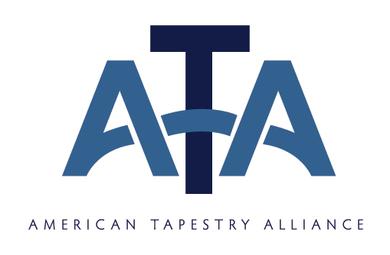
Connie Lippert
Grasslands, 2022
24.5 in x 35.5 in & 24.5 in x 34.5 in

Connie Lippert
Sky/Water, 2022
34.5 in x 24.5 in
Connie Lippert’s Artist Statement
My tapestries are woven with the wedge weave technique originated by the Navajo around 1870. In contrast to most weaving which is woven horizontally on the loom, wedge weave is woven on the diagonal which gives it a characteristic scalloped edge. The standard of excellence for tourists and traders for Navajo weaving in the late 1800s was a perfectly straight edge. The scalloped edge, which I find intriguing, is thought to be one of the reasons the Navajo abandoned the technique in the 1800s, though it has resurfaced in recent years.
In my work, I am seeking the essence of nature and the interconnectedness of all life to celebrate the spirit of the natural world. My message is one of environmental respect and protection.

Connie Lippert
Subterranean, 2022
26.5 in x 23.5 in
Connie Lippert’s Biography
Connie’s work has been exhibited in 30 states. She has received several artist grants from the South Carolina Arts Commission. Her work is represented in museum, corporate, academic, and private collections and is widely published. Her tapestries are represented in several new books including Tapestry Design Basics and Beyond by Tommye Scanlin, The Art is the Cloth by Micala Sidore, and The Art of Tapestry Weaving by Rebecca Mezoff. Connie’s journey with weaving is documented in a book by author Carole Green in Connie Lippert: A Wedge Weaver’s Storied Cloth. Connie Lippert has taught wedge weave workshops and given seminars in California, New York, Michigan, Colorado, New Mexico, Georgia, Florida, New Jersey, South Carolina, North Carolina, Massachusetts, and Wisconsin.
